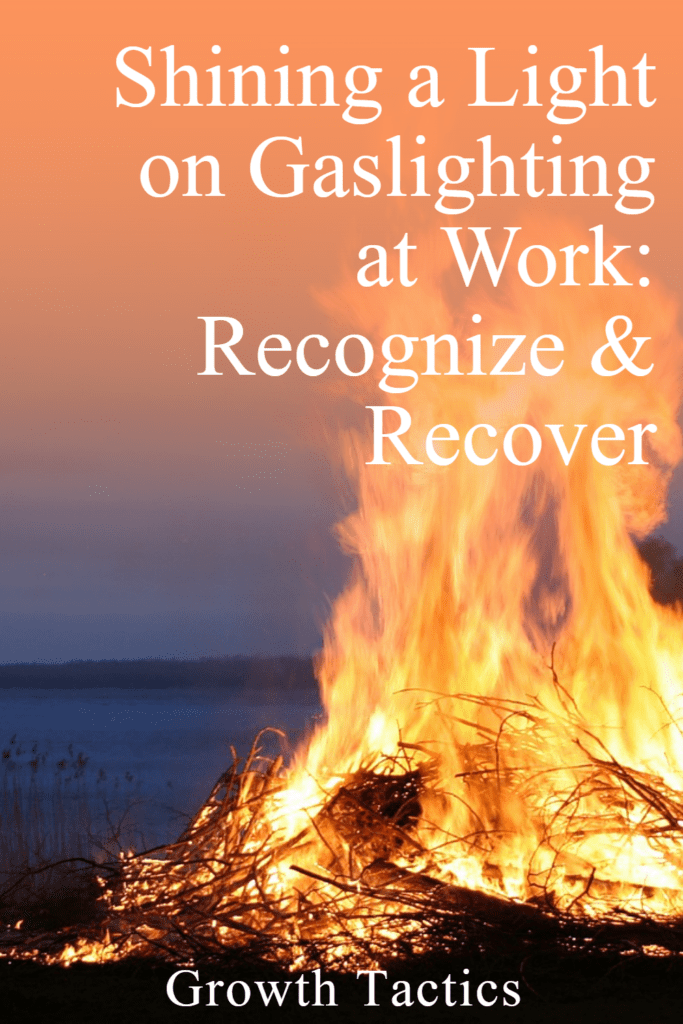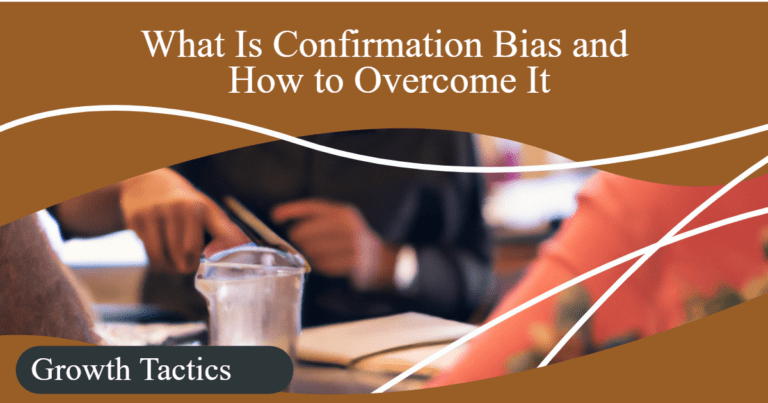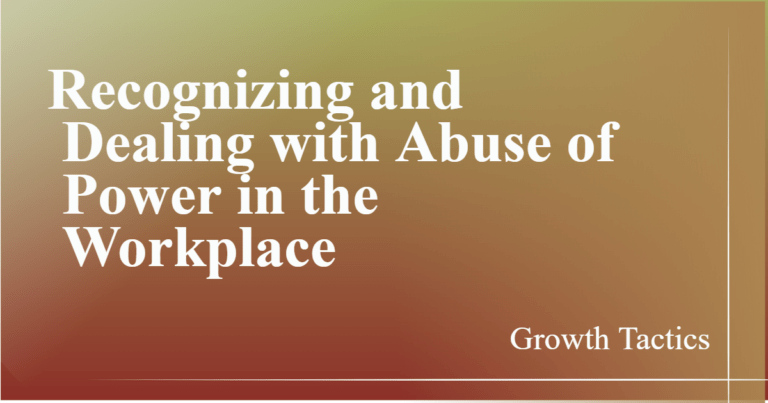Welcome to our journey of addressing and overcoming gaslighting at work. We’re here to collectively confront workplace bullying and lead the way to a healthier, more empathetic environment. This article isn’t just worth reading – it’s crucial. Our workplaces shape our lives significantly, and it is imperative that these environments inspire growth rather than inflict harm.
The article covers aspects of gaslighting, deals with related concerns, and provides actionable steps for individuals experiencing gaslighting. Sharing this journey with us will empower you with tools and knowledge to confidently navigate situations of conflict in your professional life.
Jump To Section
What is Gaslighting at Work?
Gaslighting is a form of psychological manipulation where a person is made to question their own perception of reality. In the workplace, a gaslighter may induce doubt in a coworker, invalidating their experiences and deflecting responsibility for their actions. This toxic behavior can lead to a hostile work environment.
Who is the Gaslighter?
A gaslighter often occupies a position of power and perpetrates their actions through manipulative tactics. Remember, anyone can embody gaslighter traits. It doesn’t need to be your boss. Recognizing a gaslighter at work involves understanding their common traits and behavioral patterns.
Signs of Gaslighting in the Workplace
As we forge ahead on this journey toward a more harmonious and supportive work environment, it is essential to recognize the signs of gaslighting in the workplace. Together, let’s take a closer look at these telltale signs that can provide us with the knowledge and power to confidently navigate challenging situations and reinforce our shared purpose of creating a healthy and empathetic workspace.
1. Constant Self-Doubt
One of the most common signs of gaslighting is an ever-present sense of self-doubt. Trust your instincts. If you find yourself constantly questioning your decisions, actions, or your sanity, you may be experiencing gaslighting. Remember, we all have moments of uncertainty, but if this feeling permeates most aspects of your work life, it’s time to examine the situation more closely.
2. Belittling Comments
A gaslighter may attempt to invalidate your emotions, opinions, or achievements with subtle put-downs or ruthless comments. These seemingly small jabs can slowly wear away at your confidence, making you more susceptible to manipulation. Keep in mind: your voice matters, and we are here to uplift and support one another.
3. Blame Shifting
When confronted about their behavior, a gaslighter will often deflect responsibility and shift blame onto others, leaving you feeling disoriented and emotionally drained. Recognize that this blame game is not a reflection of your worth, but rather a tactic employed by the gaslighter to keep you off-balance.
4. Isolation
Gaslighters may encourage isolation from coworkers, mentors, or other support systems. They may make it difficult for you to confide in others, heightening your feelings of helplessness. Cherishing our connections and fostering an inclusive work environment is key to conquering isolation.
5. Recollection Twisting
A gaslighter may distort or deny your memories and experiences, causing you to question your very perception of reality. Trust yourself and remember that your experiences are valid. Reach out to others for support in reaffirming your memories.
By educating ourselves on these signs of gaslighting, we empower ourselves and our fellow colleagues to stand up against manipulative behavior and foster a work environment that embraces empathy, respect, and understanding.
Let’s remain focused, positive, and forward-looking. We are not just here to identify problems but to rise above them with actionable solutions that lead to tangible benefits for everyone involved. Combating gaslighting in the workplace is a shared responsibility, and we are all active participants in creating a brighter tomorrow for ourselves and those around us.
Is this Harassment?
Gaslighting, though not always covered in harassment policies, is emotional abuse, and often falls under the broader scope of workplace harassment. Understanding how it links to workplace practices helps you respond effectively and seek support.
How Common is Workplace Gaslighting?
Workplace gaslighting is more prevalent than we realize, feeding off an imbalance in power dynamics and thriving in workplaces that don’t prioritize their employees’ emotional intelligence. The more we can understand gaslighting as a form of emotional abuse, the better we are able to identify it in our workplaces. In addition, by destigmatizing gaslighting as a problem that happens at work and not just in romantic relationships, people will feel more comfortable coming forward and reporting their experiences.
What are some Examples of Gaslighting at Work?
Here are some examples of gaslighting at work:
1. Downplaying Your Success
Has a colleague or a superior ever belittled your achievements, making you question your skills and worth? That’s an example of gaslighting. Remember, your triumphs are a testament to your capabilities and hard work. You have every right to celebrate them.
2. Manipulation of Facts and Scenarios
There may be times when a coworker insists that a conversation or an event did not occur as you recall or deny their behavior, causing you to doubt your recollection and judgment. Be aware, this is a common gaslighting tactic – the twisting of facts. Trust your memory and instincts.
3. Constant Criticism and Blame
Situations where everything you do seemingly results in criticism or blame can be deeply unsettling and erode your confidence over time. This can be another form of gaslighting, where the abuser distorts your perceptions. Remember, constructive criticism is valuable for growth, but constant, unwarranted blame is a separate issue.
4. Denial of Your Experience
Have your feelings or concerns ever been dismissed or trivialized by a colleague or a superior? This denial of your experience and emotions is another dimension of gaslighting, a way of manipulating you and attempting to override your feelings. Do not let this silence your voice or invalidate your experience.
5. The Incessant Apologizer
Experiencing a situation where you always feel compelled to say sorry, even when the fault is clearly not yours, is a form of gaslighting. This leads to a skewed perception of responsibility and needs to be recognized for what it truly is.
By identifying such examples of gaslighting, we are taking a powerful step towards fostering a kinder and more respectful work environment. We are not merely reacting to prevailing scenarios but driving innovation in our professional and interpersonal interactions.
What’s the Goal of a Gaslighter?
The perpetrator’s goal is to manipulate you into believing their version of events, making you doubt your experiences and memories. Recognizing these tactics enables you to defend your perception.
How can we Respond to Gaslighting at work?
Gaslighting can have a detrimental impact on our well-being and professional growth, but we have the power to respond effectively and reclaim control over our environment. By adopting a proactive approach and implementing the following strategies, we can counter gaslighting and create a workplace that values respect, authenticity, and mutual support.
1. Recognize and Validate Your Experience
The first step in responding to gaslighting is to recognize and validate your experience. Trust your instincts and acknowledge that your feelings and perceptions are valid. Gaslighters often attempt to make their victims doubt themselves, so it is crucial to remind yourself that your reality matters and deserves to be acknowledged.
2. Seek Support
Do not underestimate the importance of seeking support from trusted colleagues, friends, or mentors. Sharing your experiences with someone who can empathize and offer guidance can provide immense validation and perspective. Seeking support can help you strengthen your resolve and find the courage to address the gaslighting behavior in a constructive manner.
3. Maintain Documentation
Keep a record of incidents of gaslighting, including dates, times, and specific examples. Having a documented record can serve as evidence if you decide to address the issue formally with HR or management. This documentation also helps to maintain clarity and objectivity and prevents the gaslighter from distorting or manipulating the narrative.
4. Establish Personal Boundaries
Setting clear personal boundaries can help protect yourself from further gaslighting. Clearly communicate your boundaries to the gaslighter, using assertive and confident language. By establishing and enforcing these boundaries, you send a powerful message that you will not tolerate manipulation or emotional abuse.
5. Seek Professional Help
If the gaslighting has had a severe impact on your mental and emotional well-being, seeking professional help from a therapist or counselor can provide invaluable support. Therapy can help you navigate the effects of gaslighting, develop coping mechanisms, and build resilience, empowering you to rise above the manipulation and reclaim your confidence.
6. Address the Issue Directly
If you feel comfortable and safe doing so, consider addressing the gaslighting behavior directly with the individual involved. Choose a calm and private setting to express your concerns, using “I” statements to assert your feelings and experiences without being accusatory. Be prepared for the possibility that the gaslighter may deny or deflect responsibility, but remember that speaking up is a powerful step toward reclaiming your power.
7. Involve Human Resources or Management
If addressing the gaslighting behavior directly does not resolve the issue, or if the behavior continues to escalate, it may be necessary to involve human resources or management. Provide them with documented evidence of the gaslighting incidents and request their assistance in resolving the situation. Your employer has a responsibility to provide a safe and respectful work environment for all employees.
Taking Back Control: Building a Resilient Work Environment
By responding to gaslighting with assertiveness, support, and a commitment to maintaining your well-being, you actively take back control of your professional experience. Remember that you have the right to work in an environment free from manipulation and emotional abuse. By seeking support, setting boundaries, and advocating for change, you contribute to the creation of a resilient and empowering work environment for yourself and others.
Together, we can build a workplace culture that values open communication, respect, and authenticity. Let us rise above gaslighting, empower one another, and create a future where everyone can thrive and grow, unburdened by the destructive tactics of manipulation.
What are the Tools to Recover from Gaslighting?
Recovering from gaslighting can be challenging, but not impossible. Engage in practices that elevate your emotional intelligence, and let your experiences make you stronger.
How can we Recognize Gaslighting at Work?
Identifying gaslighting involves recognizing its tactics and manifestations. Equipped with this knowledge, you’ll be better prepared to tackle situations of gaslighting at work.
Final Thoughts
Equip yourself with knowledge, speak up in the face of adversity, and be the beacon of change in your workplace. Together, we can illuminate the shadows where gaslighters thrive.
Frequently Asked Questions (FAQ)
What’s gaslighting at work?
Gaslighting at work is when someone messes with your head, making you doubt yourself. It’s like they’re trying to rewrite your reality. Trust me, it can really shake your confidence and make work feel like a battlefield.
Who might be a gaslighter?
Anyone can do this, but I’ve noticed it’s often people with power. It’s not just bosses though, I’ve seen coworkers do it too. Remember, your position doesn’t define your worth or right to respect.
What are some signs I’m being gaslighted?
From my experience, watch out for:
• Feeling like you’re always wrong
• Put-downs that sting
• Getting blamed for everything
• Feeling cut off from your work buddies
• Wondering if your memories are off
Is this harassment?
While it might not always be spelled out in the rulebook, gaslighting is a form of emotional abuse. In my book, that’s harassment, plain and simple.
How common is this?
Sadly, it happens more than you’d think. I’ve seen it thrive in places where some people hold all the cards and others lack emotional smarts.
Can you give me some examples?
Sure thing. Look out for:
• Someone brushing off your wins
• Twisting facts to fit their story
• Non-stop criticism
• Acting like your experiences didn’t happen
• Making you feel like you’re always saying sorry
How can I stand up to this?
Here’s what’s worked for me:
• Trust your gut – your feelings are real
• Talk to people you trust at work
• Keep a record of what’s happening
• Set clear boundaries
• Get help if you need it
• Speak up when it’s safe to do so
What’s the gaslighter trying to do?
In my experience, they want to make you buy into their version of things. They’re trying to make you doubt what you know is true.
How do I bounce back from this?
It’s tough, but you can do it. Work on believing in yourself again. Lean on your support system. Set some ground rules for how people treat you. And don’t be afraid to talk to a pro if you need help sorting through it all.








